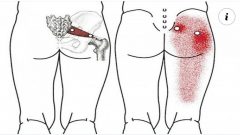Scientists Create Living Model of Human Nerve Cells

Scientists have created a miniature model of human pain in the form of nerve cells growing in a laboratory dish that respond to the discomfort of hot chillies and other kinds of physical distress. This novel model of pain, or “pain in a dish” as it has been nicknamed, will hopefully advance our understanding of pain and could ultimately lead to the development of new forms of pain relief.
Harvard University researchers said they have generated the human nerve cells that normally send painful stimuli to the brain by reprogramming ordinary skin cells experimentally so that they develop into fully mature, adult pain neurons. They believe the result “pain in a dish” could be used to discover new kinds of analgesics and other forms of pain relief, as well as helping to find out why some people are more prone to feeling chronic pain than others. The team spent three years trying to create nociceptors in the lab from stem cells, but their endeavor proved fruitless. Eventually, they gave up and decided to try a different approach, which was published in the journal Nature Neuroscience.

After examining mature pain sensing neurons in mice, the scientists identified a unique set of proteins, called transcription factors, which were active in these cells. Transcription factors control gene expression by binding to specific stretches of DNA, and are able to both activate and switch off certain genes. By adding this specific cocktail of transcription factors to skin cells in a dish, the researchers were able to successfully prompt them to assume their new identity as nociceptors.
The nerve cells created at Harvard respond to immediate physical injury, the acute “ouch” pain, as well as the more subtle forms of chronic, longer-term pain caused by things like tissue inflammation or the side-effect of chemotherapy drugs, he said.When the pain cells are heated above 42oC, they start to fire off signals just as they would in the skin of someone who touches a hot plate. They also fire off signals when brought into contact with capsaicin, the active component of chili peppers that give them their hot taste.

Clifford Woolf of the Harvard Stem Cell Institute in Cambridge, Massachusetts, said, “Pain is arguably one of the most important of our sensory applications. It warns us of danger in the environment and we’re exposed to a lot of things that can damage our sensitive biological systems. The goal was to study the key aspects of how the nervous system generates the sense of pain. The idea was to create the key elements of the human nervous system involved in pain in a dish. We’ve made neurons [nerve cells] that retain the key aspects of the pain system. They act like a fire alarm but instead of detecting a fire they detect tissue damage.” The researchers are hopeful that this simple cell-conversion technique could one day be used to create patient specific models for individuals suffering from chronic pain, which could aid the identification of potential treatments.






Facebook Comments